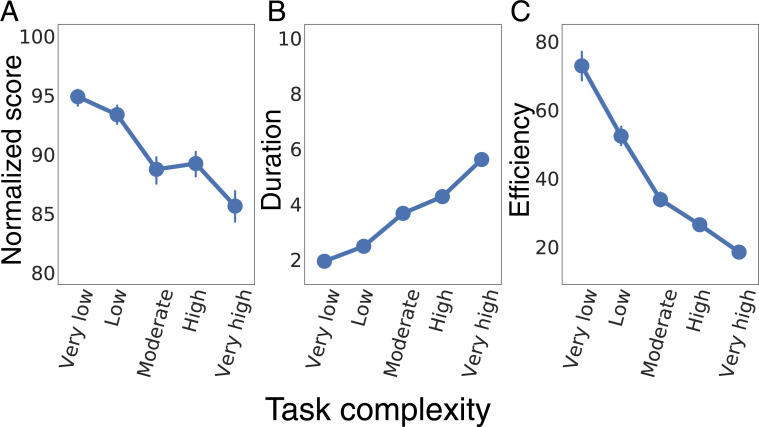Fig. 2.
Varying the room assignment task complexity. Increasing the task complexity (A) reduces the normalized score, (B) increases the time required to complete the task, and (C) reduces efficiency. Data are combined across both individual and group conditions across all six blocks. Error bars indicate the 95% confidence intervals (some are not large enough to display). Groups and individuals scored at least 80% of the maximum score in over 85% of tasks; hence, the effective range for the normalized score (i.e., the y axis of A) is between 80 and 100%. The minimum time required for a solution to be submitted is 1 min, and the maximum is 10 min; hence, the effective range for the duration (i.e., the y axis of B) is between 1 and 10 min. The difference in experienced difficulty between very low and very high complexity is very large: the average normalized score dropped by about 50% of the effective range of scores (from roughly 95 to 85% on an effective scale of 80 to 100), and the average time taken increased by 200% (from 2 to 6 min).

